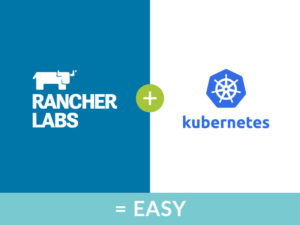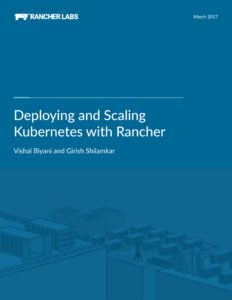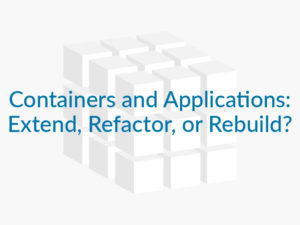Linux Has Won: Lessons from Hosting a Panel with Industry Leaders
 The following article has been contributed by Markus Feilner, Team Lead Documentation at SUSE.
The following article has been contributed by Markus Feilner, Team Lead Documentation at SUSE.
Some days ago at CeBIT, I was once more allowed to host a panel discussion with industry leaders. And not surprisingly, the topic was: Enterprise Open Source.
But something was different this year: There was no objection any more. We had some 200 guests in the audience, all of them IT, not all of them Open Source, some stayed from the talk before (John Maddog Hall), some came early because of Klaus Knopper presenting after us, but no one knew any argument against Linux or Open Source in Enterprise. Folks, we have arrived, we are mainstream. If there has been any doubt, for me that has been resolved by now.
Industry Leaders on the Panel
The topic was “Open Source in enterprise usage” (Open Source im praktischen Unternehmenseinsatz), and we had guests from the automobile manufacturing branch, the German Chamber of Commerce, a huge insurance company, and two Linux companies who collaborated in setting up their environment with 12,000 Asterisk users and Linux desktops.
I was happy to play a mixed role. I was the host, but I could also represent both SUSE – who invented Enterprise Linux and brought it to market in 2000 – and open source / Linux journalism. Ingo Grothues of LVM insurances reported that they use Ubuntu on their desktops, and Asterisk for thousands of road warriors and office workers. On top of that, recent numbers show that Linux (well okay, of course including Android) now has more desktop devices than Microsoft Windows.

CeBIT-2017
From left to right on the photo you will find Christopher Krause, from the “Competence Center IT in German Handwerk” of the Chamber of Commerce, speaking for 1.5 million small- and medium-sized companies. Next to him is Roland Stahl of NagelCarGroup. Stahl could tell about the typical needs of thousands of companies that deal with the car manufacturing sector. To my right there’s Ingo Grothues of LVM Insurances, Kai-Oliver Detken from DECOIT GmbH, and Alfred Schroeder of Gonicus. These three gentlemen set up the Linux/ Asterisk migration for the insurance company.
10 Results
Following the thread of the discussion that we had prepared, we had a very constructive discussion, and we agreed on the following ten bullet points:
1) Open Source Software (OSS) and Open Standards are everywhere. No modern enterprise can do without them, regardless of size.
2) For every enterprise business requirement there is an OSS solution. However, there may not always be a solution available that will fit all needs completely. With OSS the situation has matured into exactly the same offers and problems as with commercial proprietary software.
3) In the same way a very good piece of advice applies to OSS: “Choose big and mature products” like Apache, Samba, LibreOffice, Agorum DMS, Asterisk – projects that have been around for a long time will not suddenly disappear, because too many users depend on them, especially if the projects have an enterprise approach. A company may stop a product, but with open source you still may be able to carry on as so many do, e.g. KDE3 kiosk mode.
4) In migrations, technical matters are mostly solvable. The real challenges (see Munich) are of personal, social, political, or pedagogical nature.
5) License questions or worries do not affect users. But, as OSS users will soon start to improve the software and tend to become developers or contributors, the licensing topic becomes more and more interesting over time.
6) Small to medium enterprises and small craft owners/leaders (typical German “Handwerksbetriebe”) are now run by a different generation. These young owners/leaders are ready to accept communities and open source, unlike their predecessors. They make their decisions by looking at their competition and tend to use whatever has proven successful. Wait – did somebody mention “The Cathedral and the Bazaar”? Yes, that model seems to be a standard now within German Handwerk IT.
7) Most companies (no matter what size) do not care about open or closed source, they just want something that works and is sustainable.
8) There is a growing number of companies that offer Linux/ OSS support everywhere. Their services are not more expensive than others. In fact, small and medium size consultants nowadays have to offer Linux, LAMP, database, or other OSS support if they want to compete successfully.
9) German politics and state administration are far behind the current status, while other countries are much farther ahead. Of course this is not true for the IT departments. OSS is everywhere in German administration because the admins want it and deploy it, often cloaked and without consent (like the hidden Apache/Nginx server in the backend or Firefox/ Thunderbird on Windows desktops or the business Android phones), sometimes all the way through procurement, which is more difficult for OSS in Germany than in other countries.
This is also due to the fact that Open Source and Open Standards have less marketing and lobbying power, especially compared to big American corporations whose lobbyists are said to be omnipresent in parliaments and politician’s offices.
10) The lack of understanding OSS and open standards in the German political class and upper management often makes the usage of vendor-lock-in-free OSS more difficult than necessary. Working solutions are turned down, because marketing and lobbying succeed in convincing leaders contrary to what their employees and IT stafff will tell them. The Limux project of the city of Munich is a great example: There are no technical problems, says the IT department, but still the major wants to migrate back into the proprietary world.
Word of Mouth is OSS Marketing
Word of mouth between OSS users is the number one source of information, and it works. Indeed, it works very well. As said before, SMEs tend to look around and use what has proven successful in their environment, the smaller they are, the more they are likely to act like that.
OSS marketing efforts, both community and enterprise, are generally less effective because the whole market is supported mostly by SME companies (Mittelstand) who never did invest in marketing to the degree of big software corporations.
OSS Lobbyism: An Unbalanced Situation
These two factors lead to a unbalanced situation where grassroots growth makes OSS flourish despite the fact that policy is protecting closed source software.
Considering all of that, the news that the Open Source Business Alliance (OSBA) is investing in a full-time OSS lobbyist in Berlin to act as a counterpart for OSS in order to reflect the needs of the Mittelstand and SMEs may be just a beginning, but a needed one.
German Politics is Way Behind, Lobbying Still Needed
In a nutshell, there are far more Enterprise Linux users than the public knows, OSS has far more impact on companies than the media reports, while at the same time politics, lawmakers, and procurement policies are lagging behind.
A big thanks a lot to my former colleagues at Linux-Magazine and Computec for inviting me to host this panel. 👍
 If you’re going to successfully deploy containers in production, you need more than just container orchestration
If you’re going to successfully deploy containers in production, you need more than just container orchestration



 The cloud vs.
The cloud vs.




 This guest article has been contributed by Tanja Roth, Technical Writer at the SUSE Documentation Team.
This guest article has been contributed by Tanja Roth, Technical Writer at the SUSE Documentation Team.



 Technology is a
Technology is a
